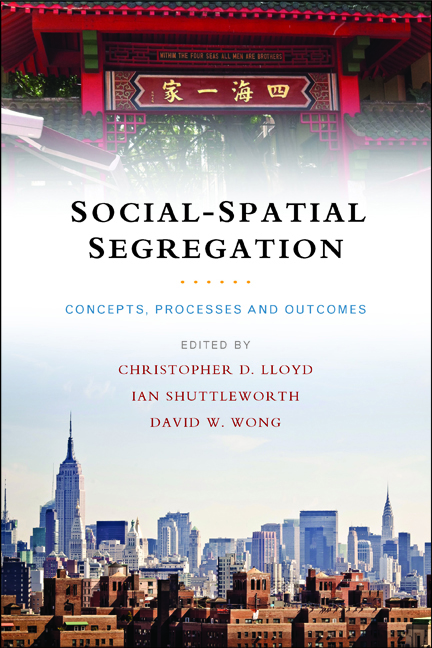nine - Perspectives on social segregation and migration: spatial scale, mixing and place
Published online by Cambridge University Press: 04 March 2022
Summary
Introduction
Most studies of residential segregation in the UK and the US are based on census data. This means that they are cross-sectional as they capture geographical population patterns as they exist at one moment in time when the census is taken. Despite this, there is a long-standing awareness that segregation is shaped by changes in population distributions through time and the process is dynamic. One major early contribution that considered these dynamic aspects was Schelling (1969, 1971) who developed, with regard to Black/White segregation in US cities, a conceptual model that demonstrated how small differences in individual residential preferences with regard to the colour of neighbours could lead to large group/place differences. Schelling's approach was influential and was later elaborated on (for an example, see Clark, 1991) to show how these small differences should lead to complete segregation once a ‘tipping point’ had been passed – as a stable equilibrium with population mixing was unlikely. Yet, despite these expectations, in some situations segregation patterns/levels do not always move inexorably towards complete segregation as might be expected. Although high levels of residential segregation remain a persistent and intractable feature of US cities (South and Crowder, 1998), there is rarely complete segregation across an urban area, and in some cases segregation levels remain relatively stable through time. Clark (1992), using the example of the Los Angeles Metropolitan Area, argues that this stability can arise through a combination of short distance housing moves and residential preferences. He goes on to suggest that urban structure(s) and morphology also play a part in maintaining stable levels of segregation through time.
This chapter aims to explore and to elaborate on the points made by Clark (1992) with special reference to geographical population patterns and the distances moved when people change address. It uses, as an example, Northern Ireland (NI), albeit one with a very different political and historical context. This is another place where residential segregation has remained stable over a long period of time – since 1991 – despite many reports to the contrary. The chapter considers how this might be so despite differences in residential preferences between Catholics and Protestants that might be assumed to lead to complete segregation once a ‘tipping point’ is past.
- Type
- Chapter
- Information
- Social-Spatial SegregationConcepts, Processes and Outcomes, pp. 197 - 220Publisher: Bristol University PressPrint publication year: 2014



